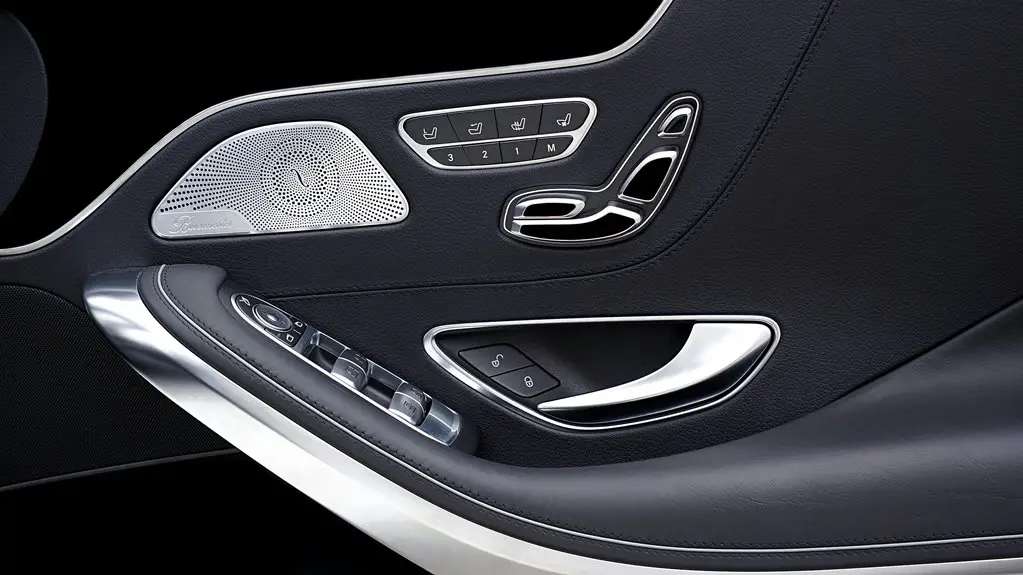To add batting for a softer, smoother upholstery finish, start by choosing a suitable batting material like cotton or polyester based on your comfort and durability needs. Remove old fabric and clean the surface, then measure and cut the batting with extra inches for coverage. Place the batting smoothly over the frame, pulling it taut, and secure it with staples or tacks from the center outwards. Trim excess material neatly for a polished look. Keep going to discover how to perfect each step for professional results.
Table of Contents
Key Takeaways
- Remove old fabric and staples, then clean and flatten the surface before applying batting to ensure smooth adhesion and finish.
- Measure furniture carefully, adding 2-3 inches to each side, then cut batting flat and wrinkle-free with sharp scissors.
- Position batting evenly over the frame, pull taut to remove wrinkles, and fasten with staples starting from the center of each side.
- Use a staple gun or upholstery tacks securing batting on the frame’s back or underside for a neat, secure attachment.
- Smooth out any bumps before applying fabric, trim excess batting, and add piping to conceal edges for a professional look.
Choosing the Right Type of Batting for Your Project
Before you begin your upholstery project, you’ll need to choose the right type of batting to guarantee comfort, durability, and the desired finish.
First, consider the material: cotton batting offers a natural feel and breathability but may compress over time. Polyester batting provides resilience and moisture resistance, making it ideal for high-use furniture. Wool blends combine softness with durability, perfect if you want a plush yet long-lasting surface.
Next, think about thickness; thinner batting creates a sleek look, while thicker layers add extra cushioning.
Finally, check the batting’s density—higher density means better support and shape retention.
Preparing Your Furniture for Batting Application
Once you’ve selected the right batting for your project, it’s time to get your furniture ready for application.
Start by removing any old fabric, staples, or tacks from the area you’ll be upholstering. Clean the surface thoroughly to remove dust, dirt, and oils that could interfere with adhesion.
Check for any damage in the frame or padding beneath and repair it as needed, ensuring a smooth base. Flatten any lumps or bumps so the batting lies evenly.
If your furniture has springs or webbing, cover them with a layer of muslin or a similar fabric to create a stable surface.
Taking these steps will help the batting adhere properly and give you that soft, smooth finish you’re aiming for.
Measuring and Cutting Batting to Size
Although measuring and cutting batting might seem straightforward, doing it accurately is essential for a polished upholstery job. Start by measuring the furniture piece carefully, adding an extra 2 to 3 inches on all sides to guarantee full coverage and room for adjustments.
Use a tape measure to get precise dimensions and mark these on the batting with a fabric chalk or pencil. Lay the batting out flat on a clean surface to avoid wrinkles.
Then, use sharp fabric scissors or a rotary cutter to make clean, straight cuts along your markings. Cutting the batting neatly prevents bunching and uneven surfaces later on.
Taking your time during this step sets the foundation for a smooth, professional-looking finish on your upholstered piece.
Attaching Batting to Upholstery Frames
When you attach batting to upholstery frames, start by positioning the batting evenly over the frame, ensuring it extends beyond the edges. This extra material helps secure it tightly.
Next, pull the batting taut and smooth out any wrinkles or bumps. Use a staple gun or upholstery tacks to fasten the batting to the back or underside of the frame. Work your way around the frame, keeping the tension consistent.
Remember to:
- Start stapling at the center of each side, then move toward the corners
- Fold corners neatly to avoid bulk
- Avoid overstretching, which can cause distortion
- Check that the batting lays flat and even before securing completely
Following these steps will give you a soft, smooth base for your upholstery fabric.
Finishing Touches for a Professional Look
Details make all the difference in upholstery, so focus on finishing touches that sharpen your work’s appearance.
Begin by smoothing out any wrinkles or bumps in the batting before securing the fabric tightly. Use a staple gun to fasten the fabric evenly, spacing staples about an inch apart for durability. Trim excess batting and fabric neatly to avoid bulk at the edges.
Consider adding piping or welting along seams to conceal raw edges and add a polished look. Double-check corners to verify they’re crisp and well-folded, avoiding loose fabric or exposed batting.
Finally, inspect your work under good lighting to catch any imperfections. These careful steps will elevate your project, giving your upholstered piece a clean, professional finish you’ll be proud to show off.
Frequently Asked Questions
Can Batting Be Added to Outdoor Furniture?
You can add batting to outdoor furniture, but you should choose moisture-resistant, quick-drying batting like polyester. It’s essential to protect it with waterproof fabric or covers to prevent mold, mildew, and damage from weather exposure.
How Does Batting Affect Upholstery Durability?
Ever wonder if adding softness might weaken your furniture? Batting actually enhances durability by absorbing impact and reducing fabric wear, so you’ll get a longer-lasting, more comfortable piece without sacrificing strength or support.
What Tools Are Essential for Batting Application?
You’ll need scissors to cut batting, a staple gun to secure it, a measuring tape for accuracy, and a spray adhesive for extra hold. Don’t forget gloves to protect your hands while working on your project.
Can Batting Be Reused From Old Projects?
You might think old batting isn’t worth reusing, but you can definitely repurpose it if it’s still clean and fluffy. Just check for damage or dirt first, then cut and reshape it as needed.
How to Clean Upholstery With Batting Inside?
You’ll want to vacuum gently to remove surface dirt. Spot clean with mild soap and water, avoiding saturation. Let it air dry completely to prevent mildew inside the batting. Avoid harsh chemicals or soaking.
- Recycling Nonwoven Fabrics: Is It Possible? - July 11, 2025
- Recycling Nonwoven Fabrics: Is It Possible? - July 11, 2025
- Recycling Nonwoven Fabrics: Is It Possible? - July 11, 2025







